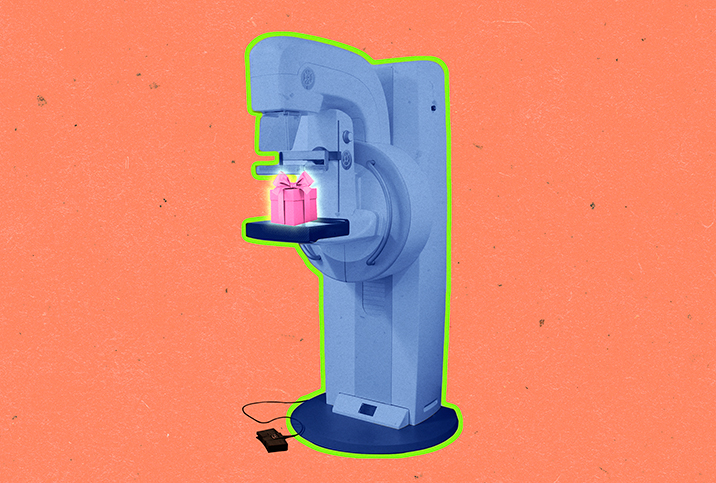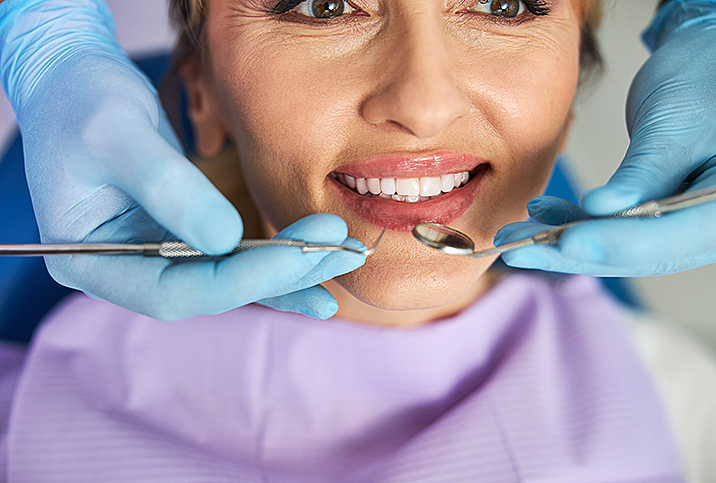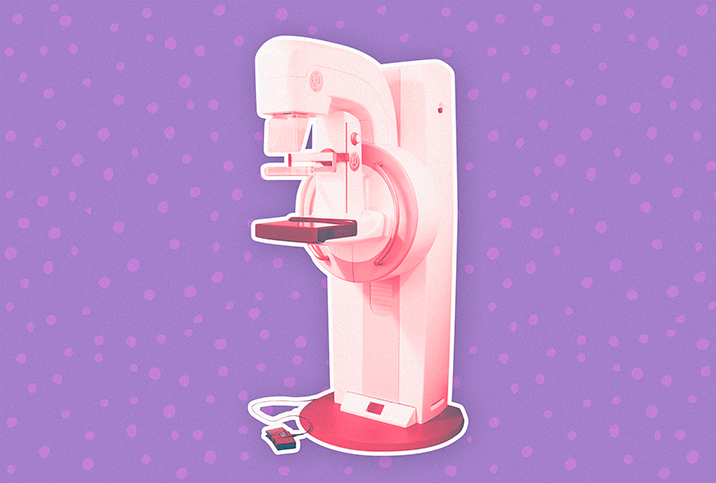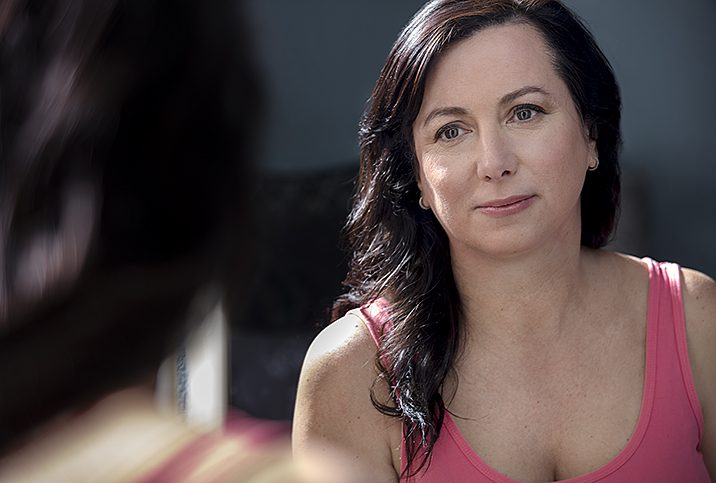The Gift of Health: Mammograms

Life feels like it gets more frantic every year, and it's easy for our health to get shunted to the bottom of our priority list, especially during the holidays. But it's time to transform your healthcare from another annoying item on the to-do list into a little self-care gift to round out the year.
Breast care
Thanks to myriad stories haunting WhatsApp group chats and coffee catch-ups, mammograms have become a source of fear for many women. But these lifesaving tests should be an integral part of a health routine, protecting you with a shield of awareness.
Every year in the United States, breast cancer is diagnosed in about 264,000 women and 2,400 men. Approximately 42,000 women and 500 men die each year from breast cancer, according to the Centers for Disease Control and Prevention (CDC).
With a little help from charity campaigns such as CoppaFeel, awareness of self-testing and mammograms is growing. However, the CDC states that the percentage of women ages 40 and older—the most high-risk group for breast cancer—who had a mammogram within the previous two years was only 69.1 percent in 2019.
What is a mammogram?
"A mammogram uses X-ray beams to take pictures of women's breast tissue," explained Rebecca Yang, M.D., medical director of breast surgery at Overlook Medical Center in New Jersey. "The machine compresses the breast in two directions. The machine compresses the breast to provide a two-dimensional evaluation and uses computer analysis, which creates a pattern of the breast tissue."
Breasts are made up of two types of tissue. One is active tissue, which has ducts and lobules, and the other is fat tissue. A mammogram examines the density of the tissue and measures the ratio of tissue to fat.
"Mammograms are the gold standard for breast cancer screening and save lives in all women, specifically in women ages 40 to 45," said Jane Mendez, M.D., the chief of breast surgery at Miami Cancer Institute. "Women with a known family history of breast cancer or a known genetic predisposition should have a conversation with their primary care provider to see if earlier testing is recommended."
It is recommended that women get annual mammograms starting at age 40. However, for those with a family history of breast cancer, it is advisable to get screening 10 years before the age that a first-degree relative was diagnosed with breast cancer.
While getting tested after finding a lump is important, sooner is always better. In most cases, by the time a patient can feel a lump, the cancer cells have been present for five years.
Testing groups and types
Women are put into two groups when determining the regularity of mammograms, as Yang explained.
"Group one encompasses those who are calculating lifetime risk for breast cancer is 12 percent, and are recommended to begin at age 40 and then continue once a year moving forward," she said. "Group two embodies women who have a higher risk of breast cancer based on family history, especially if the patient or individual has the BRCA1 or BRCA2 gene. In addition, anyone who has had Hodgkin's lymphoma and has received radiation also falls into this category as higher risk."
Mammograms are carried out for two reasons: screening and diagnostic purposes.
A screening mammogram is usually performed regularly and looks for general abnormalities. A diagnostic mammogram studies a specific abnormality that a patient or doctor has detected.
"A screening mammogram usually shows two views for each breast: a craniocaudal [CC] and mediolateral oblique [MLO] view," Mendez explained. "The radiologist then examines the views. The timeline for receiving results differs, but it's usually done with a letter."
For patients who have a lump or abnormality, there is a slightly different approach, Mendez said.
"Diagnostic mammograms may sometimes include additional views and a breast ultrasound for further evaluation," she said. "A diagnostic mammogram will be read on the same day. The goal is, if you have an underlying problem, to do all the necessary imaging to get to the bottom line."
Once the results have been reviewed and delivered, the next steps may include scheduling a biopsy, returning in a few months for repeat imaging to monitor any abnormalities, or simply getting the all-clear.
If you have dense breast tissue, you may be required to come back for more tests to verify that there are no abnormalities.
Self-examination
Checking your breasts is a key part of preventive medicine. Knowing them intimately can help you create a baseline from which to work. If it helps, keep a record of any abnormalities you have had checked and eliminated as concerns.
"The important signs to look for when performing a self-exam are changes to the breast's shape, extreme breast tenderness and/or skin changes, such as dimpling of the skin, nipple discharge or inversion of the nipple, and whether or not a lump or mass is felt," Mendez explained. "It's also important to perform the exam in different positions, both standing up and lying down, so you can feel things differently depending on the position you're in."
You should also consider the right time of the month to perform an exam, as Mendez outlined.
"For premenopausal women, the best time to perform a self-exam is the first week after the menstrual cycle," she said. "This is when breast changes go back to their baseline after menses. For women who are in menopause, we recommend they perform their self-exam on the same day every month so we are comparing apples to apples."
Accessing a mammogram
"Mammograms do not require a doctor's prescription. You can call and make the appointment yourself," Yang said. "Know your numbers. Atlantic Health System has a cancer risk assessment for patients who come in for a mammogram which calculates lifetime risk. If a patient is more than 20 percent, they will be guided to a primary care provider in the system so that they can easily access all necessary resources."
On average, a screening mammogram costs between $100 to $250. However, a diagnostic mammogram may be more expensive, depending on the type of test your healthcare provider orders. A more modern 3D examination is also pricier.
Under the Affordable Care Act, health plans are required to fully cover the cost of a screening mammogram every one or two years for all women older than 40. If you do not have health insurance, there are centers that offer low-cost or free mammograms. To find one near you, contact the National Cancer Institute or the American Cancer Society.
What is it like to get one?
Naturally, mammograms may stir trepidation in some patients.
"It was pretty scary because I was 35 and always had the misconception that breast cancer was for older women," said health and beauty influencer Fara Sue, who lives in Virginia.
"I felt like, 'Yay, I found the lump,' and at the same time like, 'Oh, my God, there is a lump!'" she said. "I was glad to have healthcare and glad to have access to answers."
Sue was later diagnosed with a fibroadenoma, a firm, smooth or rubbery lump in the breast with a well-defined shape. They are usually painless, but this was not the case for Sue. It was removed during surgery in 2020 and identified as a slow-growing cyst.
"You don't sit around and wait for the mammogram," she added. "You do your self-checks monthly."
Danielle McDermott, a fitness coach based in the United Kingdom, underwent her first mammogram at just age 35, too.
"I had to have a mammogram as I found a lump; I was only 35 years old," she explained. "The mammogram itself wasn't too bad, it was just awkward in the way you have to stand so the radiographer can place your breast in the plastic plates. It's a little uncomfortable because of the pressure on the breast but doable and manageable. It is quick, too."
Reframing the fear
"Do not delay getting your screening studies performed," Mendez advised. "Given all the technology and advances we have available today for the detection and treatment of breast cancer, we know that when breast cancer is detected early, we have a 98.5 percent survival [rate] at 10 years."
Reframe your fears and remember that your health is precious. Preventive healthcare extends life expectancies.
"Remember this is a true form of self-care," Yang said. "You only get one body and one life. Take care of it. I would recommend going with a friend. It is important to support one another to get checked."
During the holidays or the coming year, reject fear-mongering anecdotes about discomfort and awkwardness and gift yourself a mammogram to protect your breast health.
As Sue said, "Don't be nervous. They are lifesaving."


















